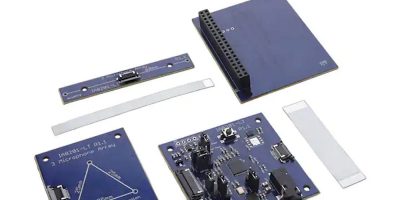Round TFT displays in the POS-I-PRO series open up design possibilities for industry, digital signage, interior design and smart homes, says Distec. The HMI series includes four expansion variants with a screen diagonal of 3.4 inches at a resolution of 800 x 800 pixels and a brightness of 350cd/m².
As is the case with the rectangular devices in the POS-PRO series, the displays integrate a PCAP touchscreen which can be operated with up to 10 fingers. A chemically hardened cover glass protects against scratches and damage.
The displays can be used for both indoor and outdoor applications, from industrial, point of sale (POS), digital signage, advertising technology and interior design, for example integrated in furniture and other smart home equipment.
The basic version POS-I-034-00-PRO-V1 is built into a powder-coated aluminium housing and can be integrated via threaded bolts on the rear of the housing. An O-ring ensures that the front is sealed against dust and water jets in accordance with IP65. There is also a mini HDMI connection for the image signal and a USB-C connection for touch and power supply.
The POS-I-034-00-PRO-V2 model has additional cables (1m each) which are secured via a strain relief. “We have added a Raspberry Pi 4B to variant 3,” says Ludwig Deimel. “The Raspberry Pi is mounted in its own robust housing with passive cooling and can be installed remotely from the display unit.” The Raspberry Pi OS (operating system) opens up possibilities for the displays’ use in the display and advertising sectors.
Round displays also offer new perspectives in furniture design and in smart homes. The POS-I-034-00-PRO-V4 is an integrated HMI. Both the display unit and the Raspberry Pi are mounted in the housing on a mounting frame and equipped with holes, cut-outs and threads to allow easy and quick integration, says Distec.
Distec explains how it has solved another challenge for the POS-I-PRO relating to the OS. Conventional OS can only display a rectangular desktop, which cuts off the content in the corners on a round display. Based on the Embedded Wizard software, Distec delivers a basic framework for real round displays with basic commands for integrating the touchscreen, such as swipe gestures and click modes, already part of the package. Smaller and larger models of the POS-I-PRO can also be implemented on request.
The POS-I-PRO series meets the requirements of the new EU Ecodesign Directive, guaranteeing long-term availability of spare parts and ease of repair. Distec manufactures the devices in Germany.







